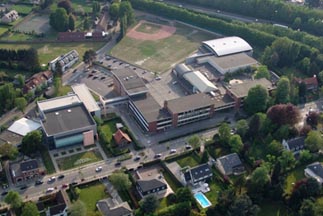Digital Crayon: Article 1 – Musings on School Design
Welcome to the first entry of Digital Crayon, a series on school planning and design. My goal with this series is to share with you some of the insights learned in our Education Studio and throughout my career.
By way of introduction, I am a partner here at TruexCullins and co-lead our Education Studio with fellow partner Richard Deane. Richard’s area of expertise is higher education design. My specialty is K-12 school design. I am passionate about the interrelationship between school design and the “new” 21st century learning paradigm. As I often joke with my clients, I know enough about education to be dangerous, but please don’t expect a scholarly discourse – this will be more of a conversation. I welcome your feedback as well. So let’s get started. This is always the hardest part – getting started (with this blog too!).
It helps to have a strategic plan. Ideally a facility project grows out of a long term strategic direction for your school. Often, however, that is not the case. Sometimes projects are the result of growth and a response is needed – no time for a strategic plan.
The first thing you need to do is define the project as best you can and hire an architect. Some schools have ongoing relationships with an architect; others issue a Request for Proposals (RFP). In either case, it always best to be as specific as you can be so that the proposal accurately reflect an appropriate scope of work. We have lots of examples of RFPs (good and bad) which we can share, just email me at David Epstein.
The standard process is to invite several qualified architects, review their proposals and create a short list of three to four finalists for interviews. For international projects, the interviews are often done on Skype. Sometimes there is design work requested, sometimes not. As an architect, we always hope that the level of effort requested is commensurate with the opportunity.
It is really important to find a consultant that’s a good fit – someone not only with the expertise you need, but someone you have good chemistry with. After all, you may be working with them for quite a while. Good planning sets the table for a successful project and planning and design costs are minor compared with building and operating costs so we recommend focusing on the fit and getting the leadership, creativity and expertise with a firm you will enjoy working with.
Next Digital Crayon – Article 2, The Planning Process

